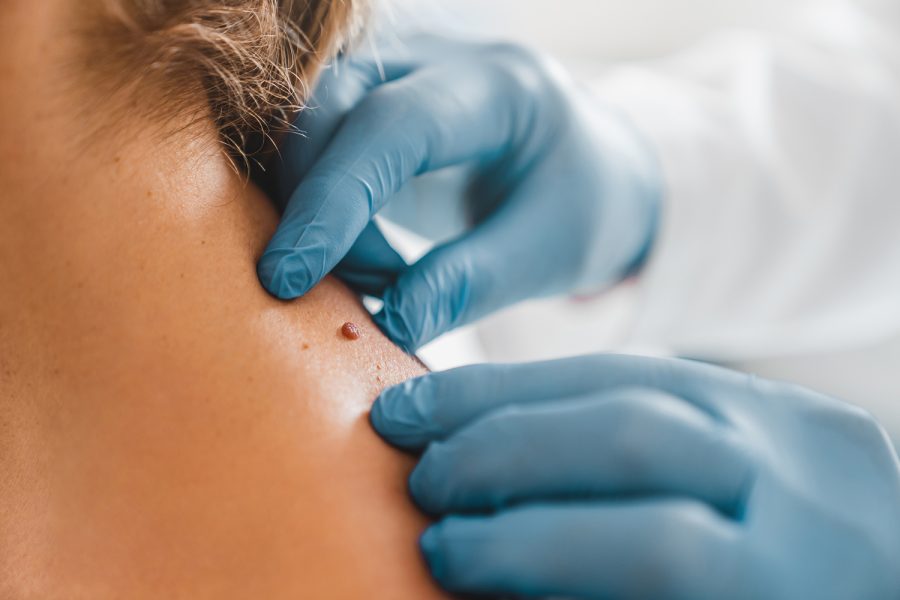Guest Opinion | The Doctor is in: Relearning your ABCDEs can help diagnose melanoma
With the incidence of melanoma on the rise, recognizing concerning features of a mole can help you decide when to visit your local dermatologist.
August 28, 2022
Melanoma is the fifth most common cancer in the U.S, and its incidence has grown over 320 percent in the past four decades. The risk of melanoma increases with age, but it is one of the most common cancers in young adults, according to the American Cancer Society.
Melanoma is a type of skin cancer. Specifically, it is a cancer of melanocytes. These are cells in the skin that produce melanin, a compound that gives skin its pigment and protects us from damaging UV radiation.
While melanoma is known as the deadliest of the skin cancers, it has a high survival rate when detected early. This article briefly details what features of a mole warrant medical attention, how to perform a thorough skin exam on yourself, and risk factors for melanoma.
What are some signs of melanoma?
The first sign is either a change in an existing mole or appearance of a new mole. Recognizing what features of a mole are concerning and warrant medical attention are summarized with the ABCDE mnemonic.
- A If the mole is symmetric, it is less concerning.
- B Normal moles usually have a smooth border. Concerning features are if the edges of the mole are irregular, blurred, or ragged
- C Multiple shades of colors in one mole (e.g., brown, black, pink, white or blue) is concerning
- D Moles >6 millimeters (the size of a pencil eraser) are concerning and should be evaluated EVEN if symmetric.
- E If your mole is changing in shape, size, or color, this should be evaluated
How do I make sure I am thorough with my skin exams?
Performing a self-skin exam is easy and takes less than 10 minutes. It is recommended to perform a thorough skin exam of yourself every month, preferably after a bath/shower. If you cannot see a spot on your body, have a friend/family member assist you.
To perform a self-skin exam, find a large mirror/hand mirror and follow these steps:
- Stand in front of the mirror, raise your arms, and examine the front/back of the body and then right/left
- Bend the elbows and look at the forearms, back of upper arms and Then, look at the back of legs/feet, and the spaces between your toes and soles of feet
- Examine the back of your neck/scalp while parting your
- Lastly, examine the skin on your buttocks
In addition to running through the ABCDEs and regular self-skin exams, it is important that you review your skin history with your healthcare provider.
Make sure to tell your provider about any risk factors including total sun exposure, other health conditions, use of indoor tanning devices, and prior skin cancer/family history.
Remember, just because your mole has an “alarming feature” does not mean it has to be melanoma. In fact, a recent study, of 150 suspicious moles found that only 7 percent were found to be melanoma.
The best way to protect yourself from melanoma is to be vigilant about sun protection. Be sure to apply SPF30 when going into the sun and AVOID tanning booths.
– Smrithi Mani, Third-year medical student, Class of 2024 and Vijayvardhan Kamalumpundi, Third-year medical student, Class of 2024
Columns reflect the opinions of the authors and are not necessarily those of the Editorial Board, The Daily Iowan, or other organizations in which the author may be involved.



